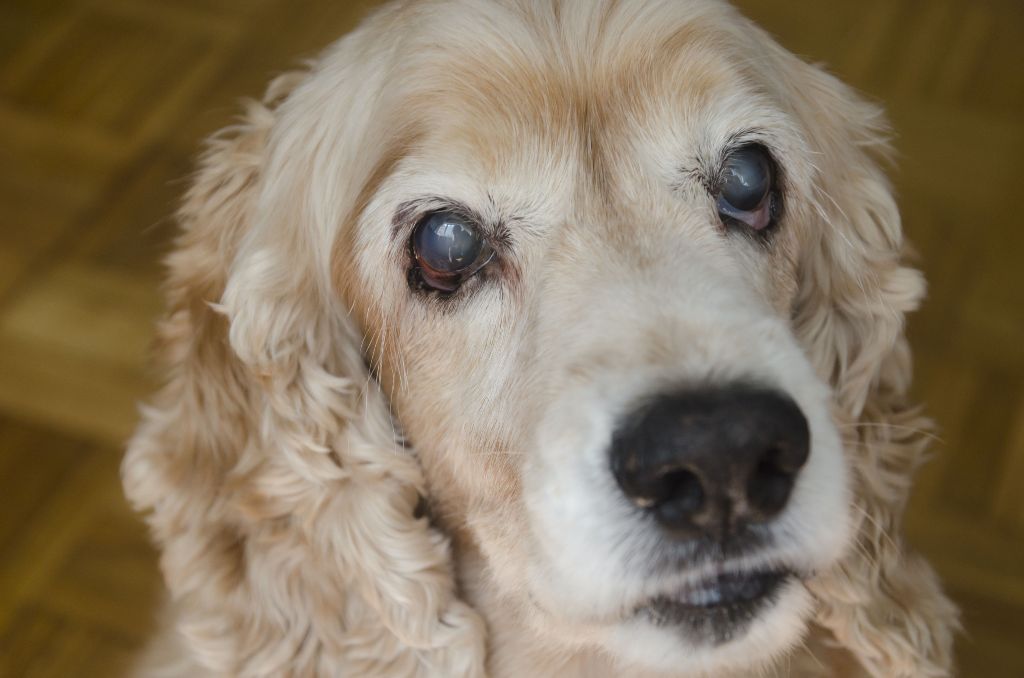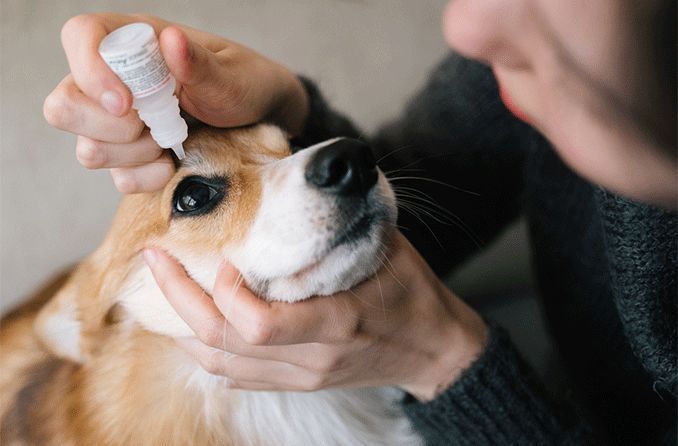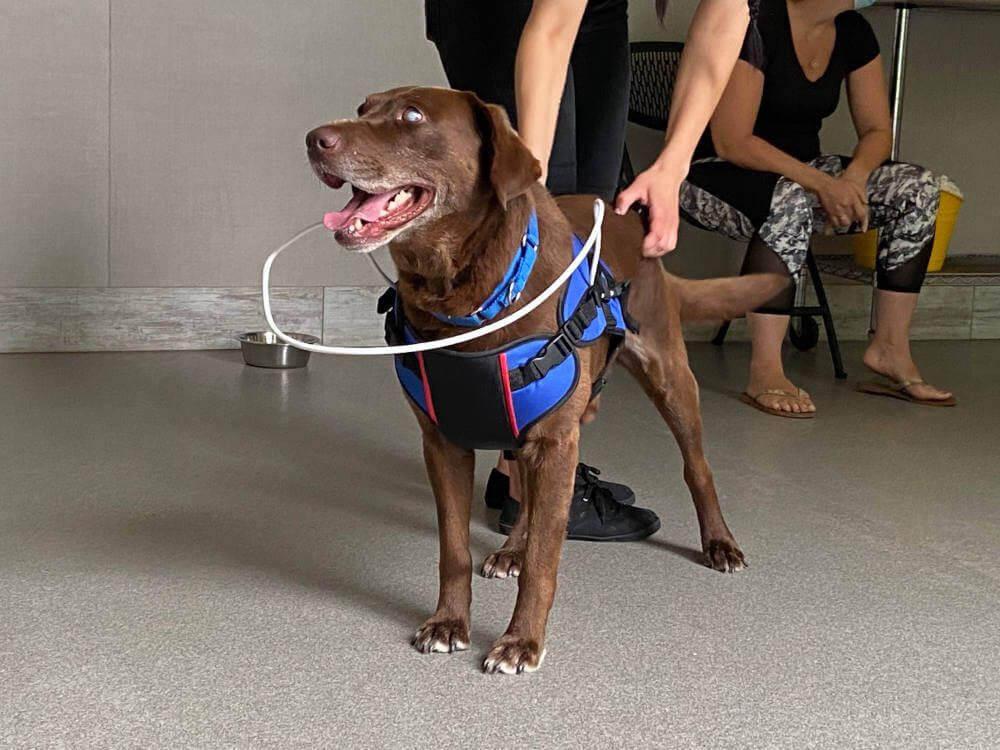Introduction
Most dog owners take their pet’s excellent night vision skills for granted. We casually toss a ball into the darkness and our canine companion eagerly bounds after it, able to spot the toy in even the dimmest light. But what enables dogs to see so clearly at night? And is it a skill they could potentially lose as they age?
In this article, we’ll take a close look at the structure and biology behind your dog’s night vision abilities. We’ll also discuss whether dogs can experience deteriorating eyesight in low light as they get older, what health conditions may impact their vision, and how to tell if your aging pup is having more trouble seeing in the dark.
The Structure and Function of Canine Eyes
A dog’s eyes have anatomical similarities to human eyes but also some key differences. The main structures of a dog’s eye include the cornea, iris, pupil, lens, retina, and optic nerve (Zigzag, n.d.). The cornea is the transparent outer layer that first receives light. Behind it sits the iris, which is the colored part of the eye containing the pupil. The pupil controls how much light enters by dilating and constricting. The lens then focuses this light onto the retina at the back of the eye.
The retina contains two types of photoreceptor cells called rods and cones. Rods detect shapes and motion, while cones allow dogs to see color. Dogs have a higher concentration of rods compared to humans, allowing them to see well in dim light (PetMD, 2021). The increased rods come at the expense of fewer cones, so dogs see fewer colors than humans.

When light hits the rods and cones, signals travel along the optic nerve to the brain to form images. The structure of canine eyes enables dogs to have unique visual capabilities adapted for their environments.
How Dogs See at Night
Dogs have several adaptations that allow them to see well in low light conditions. One key adaptation is the tapetum lucidum, a reflective layer behind the retina that bounces light back through the retina, essentially giving light particles two chances to be detected [1]. This boosts dogs’ night vision abilities. Dogs also have a high concentration of rod photoreceptor cells in their retinas compared to humans. Rod cells detect dim light and motion, allowing dogs to see even when only a small amount of light is present [2]. Additionally, dogs have larger pupils relative to their eye size, which allows more light to enter the eye. Their pupils also dilate faster and wider than human pupils, further enhancing light capture in darkness. These adaptations make dogs exceptionally equipped for seeing at night.
Can Vision Deteriorate With Age?
Yes, both day and night vision can deteriorate as dogs age. Similar to humans, dogs can develop age-related vision issues like nuclear sclerosis, cataracts, and progressive retinal atrophy.
One of the most common causes of age-related vision loss in dogs is nuclear sclerosis. This condition causes the lens of the eye to become cloudy and appears like a bluish-gray discoloration. While it mainly affects close-up vision, it can also impact night vision. The cloudiness scatters light entering the eye, making it more difficult for dogs to see clearly in low light conditions [1].

Cataracts are another issue that commonly arises in senior dogs and affects how much light reaches the retina. As cataracts worsen, dogs lose the ability to see clearly in bright and dim settings. The opaque areas block light from passing through the lens, significantly reducing night vision abilities [2].
Progressive retinal atrophy, a degenerative condition targeting the retina, also impairs night vision over time. As photoreceptor cells die off, dogs lose the ability to see in low light. Night blindness is one of the first symptoms noticed with this condition [3].
So in summary, yes aging can negatively impact a dog’s ability to see at night. Conditions like nuclear sclerosis, cataracts, and progressive retinal atrophy damage structures integral for low light vision. Owners may notice increased clumsiness or hesitancy going outdoors at night as their dogs gradually lose night vision.
Common Causes of Vision Loss in Dogs
Some of the most common causes of vision loss in dogs are:
- Cataracts – a clouding over of the lens in the eye that leads to blurred vision. Cataracts tend to develop as dogs age but can also be present at birth or develop from disease or injury.
- Progressive Retinal Atrophy (PRA) – an inherited, degenerative disease of the retinal visual cells that causes progressive vision loss leading to blindness. PRA is one of the most widespread inherited diseases in dogs.
- Glaucoma – increased pressure within the eye that damages the optic nerve. Glaucoma often begins with loss of peripheral vision.
- Sudden acquired retinal degeneration syndrome (SARDS) – the sudden loss of vision in mature dogs due to disease of the retinal tissue. The cause is still unknown.
- Diabetes – chronically high blood sugar levels associated with diabetes can cause new blood vessels to grow in the eyes, damaging vision.
- Nuclear sclerosis – a benign hardening of the lens in the eyes of older dogs that leads to hazy/blurry vision.
Some other potential causes include retinal detachment, hypothyroidism, hypertension, and optic neuritis.
Signs Your Dog is Losing Vision
There are several noticeable signs that may indicate your dog is experiencing vision loss. One of the most common is bumping into objects or seeming disoriented in familiar surroundings. Dogs with declining vision may suddenly start bumping into walls, furniture, or other obstacles when navigating through the house.
You may also notice a reluctance to go outside or down stairs at night. Dogs rely heavily on their vision for moving around, so difficulty seeing in low light can make them hesitant to venture outdoors in the darkness. They may be fearful of going down stairs at night as well.
Squinting eyes or persistent rubbing at the eyes could also be indicative of vision troubles. Your dog’s eyes may water excessively or take on a hazy, bluish hue as cataracts develop. Often dogs with diminished vision will have difficulty locating toys, food bowls, or treats on the floor.
It’s important to regularly monitor your senior dog’s eyes and behavior for any potential signs of declining eyesight. Early detection allows for quicker intervention and treatment if needed. Don’t hesitate to consult your veterinarian if you suspect your dog may be losing vision.
Diagnosing Vision Issues in Dogs
If you suspect your dog is having vision issues, it’s important to have your veterinarian perform a complete eye exam. Your vet has specialized tools and training to thoroughly evaluate your dog’s eyes and determine the cause of any vision problems.
Some of the eye tests your vet may perform include:
- Ophthalmoscopy – This allows the vet to examine the inside of the eye including the retina and optic nerve. It can detect issues like cataracts, retinal disease, or optic neuritis.
- Schirmer tear test – Measures tear production to test for dry eye or other abnormalities.
- Fluorescein stain – Uses an orange dye to detect ulcers, scratches or other damage on the surface of the eye.
- Tonometry – Measures pressure inside the eye to screen for glaucoma.
- Slit lamp exam – Provides a magnified view of the eye including the cornea, iris, lens, and other structures.
Your vet may also assess your dog’s vision by observing their navigation and response to visual cues. There are also more specialized vision tests like electroretinography and visual evoked potential to evaluate retinal and optic nerve function.
Early diagnosis and treatment of eye issues can help prevent progression of vision loss in dogs. Schedule regular eye exams with your veterinarian if you notice any signs of visual impairment in your pet. For more information on eye care for dogs, check out this article: https://www.dogshealth.com/vision-problems-in-dogs/
Treatment Options

There are several treatment options that can potentially restore vision or slow the progression of vision loss in dogs:
Surgery
Surgery may be recommended for some conditions like cataracts or glaucoma. Cataract surgery has a high rate of success in dogs and can restore vision loss caused by cataracts. For glaucoma, surgery can help lower pressure in the eye and prevent further damage (dogsnaturallymagazine.com).
Medication
Medications can treat some of the underlying causes of vision loss like diabetes, high blood pressure, or inflammation. Controlling these conditions may stop the progression of vision loss. Certain eye medications like drops or ointments can also provide symptom relief (akc.org).
Supplements
Supplements containing antioxidants like lutein and zeaxanthin may help improve eye health and slow age-related vision loss. Omega-3 fatty acids can reduce inflammation in the eyes. Discuss supplement options with your vet.
Lifestyle Changes
Making adjustments around the home and to your dog’s routine can make it easier for them to navigate with limited vision. This includes clearing clutter, using ramps, keeping furniture in the same place, and using scents or sounds as cues.
Caring for a Dog With Failing Vision
If your dog’s vision deteriorates due to age or other causes, you can take steps to help them remain safe, active, and enriched at home. According to experts, some of the most important actions involve modifying the home environment and giving your dog extra care and attention.
One of the top priorities should be making your home safer for a dog with limited vision. Remove all potential tripping hazards like loose cords, toys, or furniture in walkways. Use baby gates, indoor fencing or barriers to restrict access to areas like stairs or balconies where falls could occur. Place non-slip rugs on smooth floors to help with traction. Keep food and water bowls in consistent locations and avoid moving furniture frequently (Pampered Paw Gifts, 2022).

It’s also crucial to train your dog to navigate more carefully without sight. Teach verbal cues like “wait,” “stop,” or “slow” so they learn to move cautiously and avoid collisions. Reward them for responding appropriately. Take them on regular walks to maintain familiarity with the outdoor environment. Consider using a harness and leash for control and to avoid injuries (Dog Days, 2014).
Make a point to engage in more interactive play, cuddling, talking, and enrichment activities to keep your dog’s mind active. Rotate novel scented toys to maintain interest. Feed them from food puzzle toys rather than a bowl. Consider learning new commands or tricks together through positive reinforcement training. And remember to be patient – it takes time for dogs to adjust to blindness (VetInfo, 2022).
Conclusion
To recap, dogs see well in low light due to a tapetum lucidum layer in their eyes that reflects light back through the retina to enhance night vision. However, dogs can gradually lose the ability to see in the dark as they age due to normal deterioration of the eyes or conditions like cataracts and progressive retinal atrophy. Some signs that your dog may be losing night vision are bumping into objects in dim light, reluctance to go out at night, and eyes that reflect less light in photos. If you suspect your dog’s vision is declining, have your vet examine their eyes and run tests to determine the cause. While some vision loss is irreversible, some conditions like cataracts are treatable. You can support your dog’s failing vision by avoiding rearranging furniture, keeping paths well-lit, walking them on a leash at night, and using verbal cues. While it’s sad to see a dog lose vision, they can adapt remarkably well using their other senses. With some adjustments to their environment and routine, dogs with limited vision can continue to live happily.